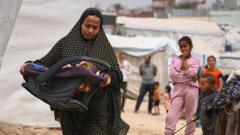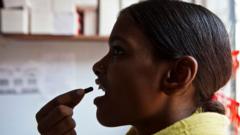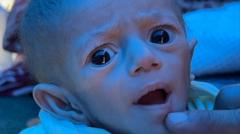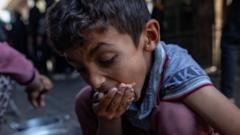Despite improvements in health and nutrition, India's child stunting rates remain high, affected by entrenched caste dynamics. A study highlights how caste disparities in access to resources contribute to malnutrition among India's children, with marginalized groups like adivasis and Dalits facing the greatest challenges.
Caste Discrimination: A Key Factor in India's Child Stunting Crisis
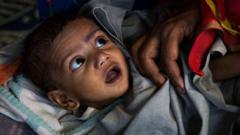
Caste Discrimination: A Key Factor in India's Child Stunting Crisis
Research reveals the significant impact of social identity and caste on child malnutrition in India, contributing to higher stunting rates than Sub-Saharan Africa.
The missing puzzle piece in India’s child stunting crisis has emerged from new research conducted by economists Ashwini Deshpande from Ashoka University and Rajesh Ramachandran from Monash University, Malaysia. Their findings reveal the crucial role of social identity and caste discrimination in the alarming levels of malnutrition, specifically stunting, among Indian children. According to official statistics, a staggering 35.7% of India’s 137 million children under five are stunted, a rate that surpasses the average of 33.6% across 49 Sub-Saharan Africa countries.
The study indicates that merely focusing on the height gaps doesn't provide a complete understanding of the issue. A child is classified as stunted when they fall significantly below the expected height for their age, highlighting critical nutritional deficiencies. The significance of the first 1,000 days of life cannot be overstated, as this “golden period” sees significant development, ultimately impacting a child's long-term potential. Access to healthcare, nutrition, and a safe environment shapes their future and development.
The research draws on data indicating that marginalized groups such as Adivasis and Dalits—making up over a third of the under-five population—experience significantly higher stunting rates. The analysis showed that while children from higher-ranked, non-stigmatized caste groups exhibit stunting rates of 27%, those from marginalized backgrounds are approximately 20% more likely to be stunted, despite similar socio-economic conditions.
While some have argued stunting might be attributed to genetic factors, the study contradicts this notion, emphasizing the role of socio-economic disparities. Women and children from these marginalized groups often face greater risks of malnutrition due to less access to education and healthcare.
Despite governmental efforts through affirmative action over the last 70 years, India’s caste system remains entrenched, perpetuating inequalities in access to resources and nutrition. The findings highlight an overlooked dimension in the discourse surrounding the height gap between children in India and those in Sub-Saharan Africa, affirming that understanding caste dynamics is critical in addressing child malnutrition in India.
In conclusion, the report utilizes extensive demographic health data collected between 2019-2021 for India and a range of surveys from 19 countries in Sub-Saharan Africa. It underscores that addressing child stunting in India goes beyond dietary interventions and must also confront deep-rooted social structures that shape access to nutrition and health resources.





